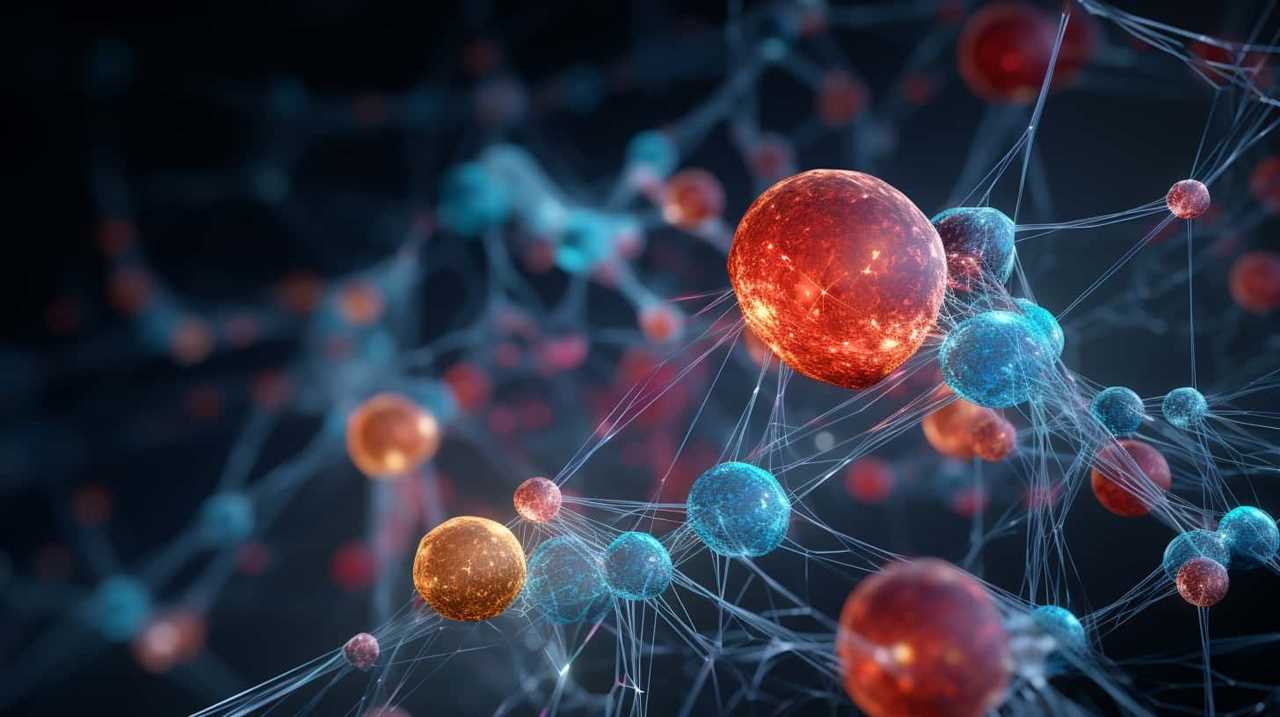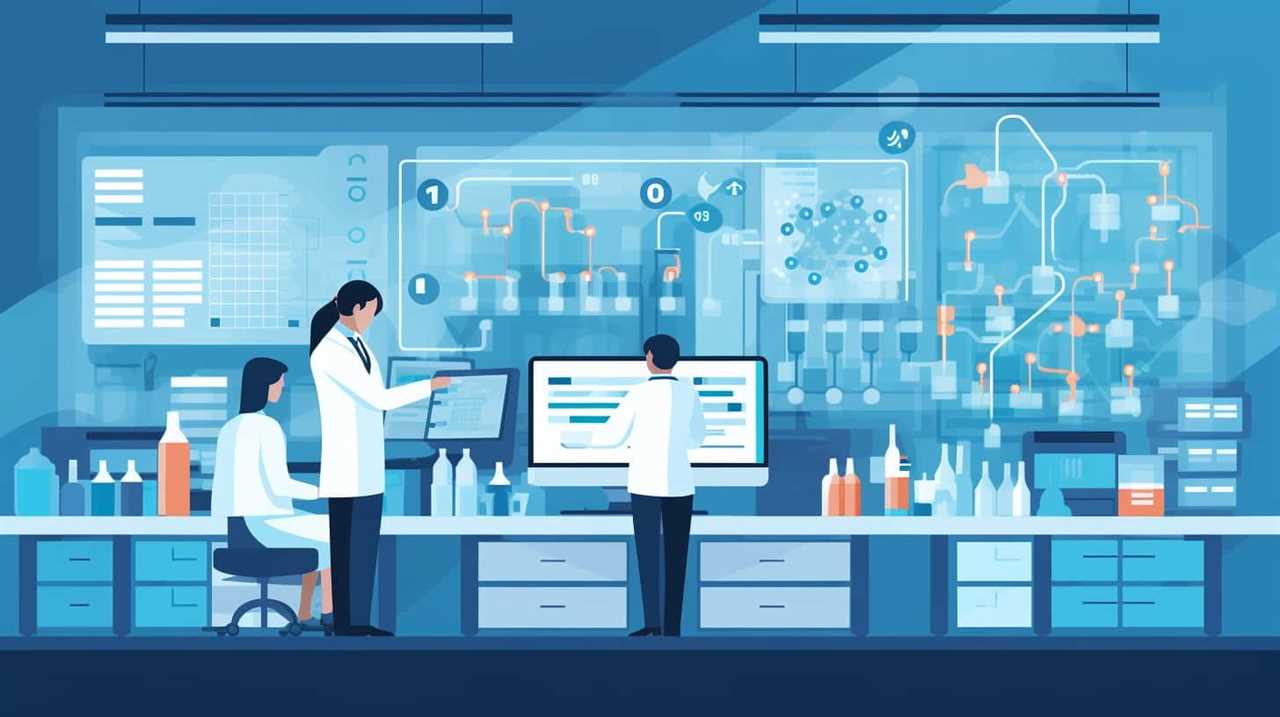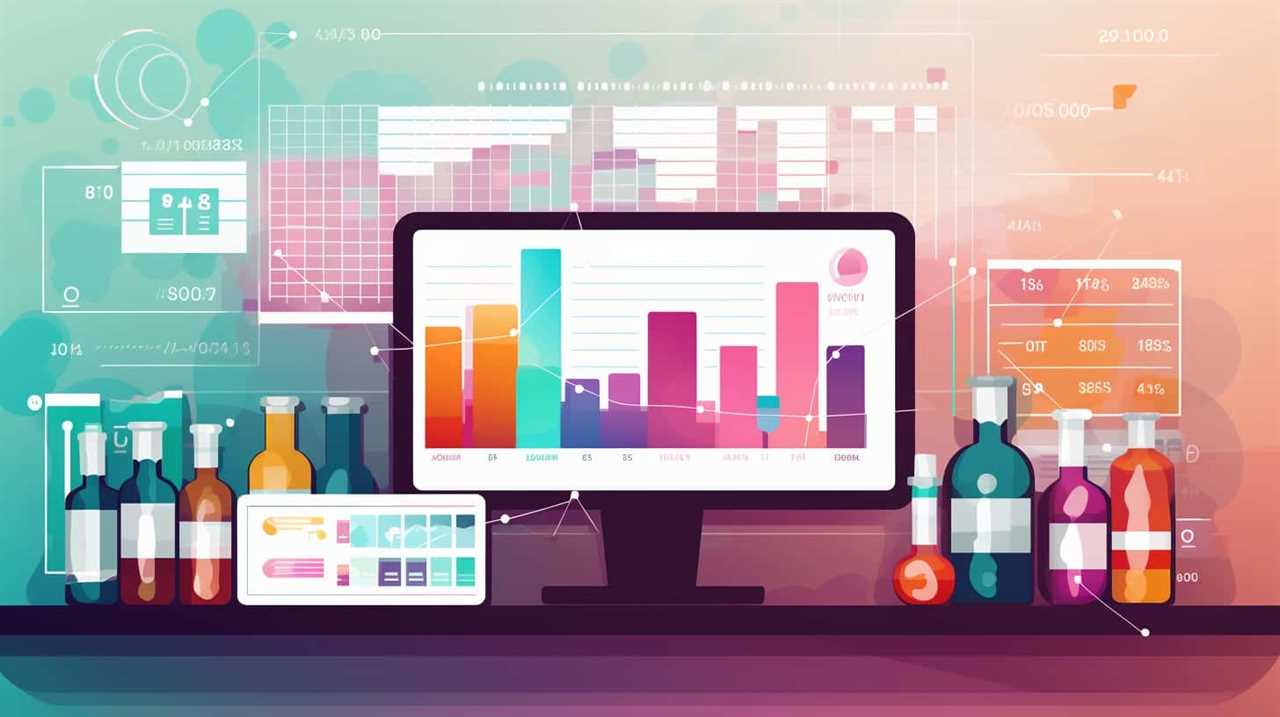Discover the thrilling opportunities that exist in the field of AI for medical imaging.
Our team has delved into the depths of this groundbreaking technology, uncovering a world of improved diagnostic accuracy, enhanced workflow efficiency, and personalized patient care.
Through the integration of emerging technologies, we have unlocked the potential for advanced disease detection like never before.
Join us on this journey as we paint a vivid picture of the promising future that awaits in medical imaging AI.
Key Takeaways
- Improved diagnostic accuracy and cost-effectiveness
- Enhanced workflow efficiency
- Personalized patient care
- Advanced disease detection
- Integration with emerging technologies

Improved Diagnostic Accuracy
We have witnessed a significant increase in diagnostic accuracy with the implementation of medical imaging AI technologies.
These advancements have led to improved treatment outcomes and cost-effective solutions in healthcare.
Medical imaging AI algorithms are designed to analyze medical images such as X-rays, CT scans, and MRIs, enabling them to detect abnormalities and assist in accurate diagnoses.
By harnessing the power of machine learning and deep learning techniques, these AI technologies can identify patterns and features that may be missed by human radiologists, leading to more precise and reliable diagnoses.
This improved accuracy not only enhances patient care but also reduces the need for unnecessary procedures and treatments, saving healthcare costs.
The integration of medical imaging AI into clinical practice has truly revolutionized the field, offering a promising future for improved diagnostic accuracy and better healthcare outcomes.

Enhanced Workflow Efficiency
With the advancements in medical imaging AI technologies, healthcare providers can experience enhanced workflow efficiency through streamlined processes and improved resource allocation. Automation benefits play a significant role in achieving this efficiency. By automating tasks such as image analysis, report generation, and data management, AI systems can save valuable time for healthcare professionals. This allows them to focus more on patient care rather than tedious administrative tasks.
Additionally, AI algorithms can help in prioritizing critical cases, reducing waiting times for patients and improving overall patient flow. Beyond time-saving, the implementation of AI in medical imaging also leads to cost reduction. By optimizing resource allocation and reducing manual errors, AI can minimize unnecessary repeat scans and decrease operational expenses.
These efficiency improvements pave the way for the subsequent section on personalized patient care, where AI can further revolutionize the healthcare industry.

Personalized Patient Care
Our patients benefit greatly from the implementation of medical imaging AI through personalized care. With the help of AI, patient monitoring becomes more accurate and efficient. AI algorithms can analyze medical images in real time, allowing healthcare professionals to closely monitor patients and detect any abnormalities or changes in their condition. This enables early intervention and timely treatment optimization.
AI can also assist in predicting patient outcomes based on imaging data, helping healthcare providers make more informed decisions about treatment options. By leveraging AI technology, healthcare professionals can personalize patient care by tailoring treatments to each individual’s unique needs and characteristics. This not only improves patient outcomes but also enhances the overall quality of care provided.

Advanced Disease Detection
Utilizing cutting-edge AI algorithms, medical imaging AI revolutionizes disease detection by accurately analyzing medical images in real time. This advanced technology has the potential to transform healthcare by enabling early detection of diseases and facilitating precision medicine. Here are four key reasons why advanced disease detection with medical imaging AI is so promising:
- Improved Accuracy: Medical imaging AI algorithms can identify subtle abnormalities that may be missed by human observers, leading to more accurate and reliable disease diagnosis.
- Faster Results: With real-time analysis, medical imaging AI can provide rapid results, allowing healthcare professionals to make timely decisions and initiate appropriate treatment plans.
- Enhanced Patient Outcomes: Early detection of diseases through medical imaging AI enables prompt intervention, leading to better patient outcomes and increased chances of successful treatment.
- Cost Savings: By detecting diseases at an early stage, medical imaging AI can help reduce healthcare costs associated with late-stage interventions and prolonged treatments.

Integration With Emerging Technologies
How can medical imaging AI integrate with emerging technologies to enhance disease detection and patient care? One exciting avenue of exploration is the integration of medical imaging AI with augmented reality (AR) and virtual reality (VR) technologies. By combining the power of AI algorithms with immersive technologies, healthcare professionals can gain new insights and enhance their ability to diagnose and treat diseases. AR can overlay medical images onto the patient’s body, allowing for a more precise understanding of the anatomy and potential abnormalities. VR, on the other hand, can provide a realistic, three-dimensional visualization of medical data, enabling surgeons to plan and perform complex procedures with greater accuracy. The table below summarizes the potential benefits of integrating medical imaging AI with AR and VR technologies:
| Emerging Technology | Benefits |
|---|---|
| Augmented Reality | – Enhanced visualization of medical images |
| – Improved surgical planning and navigation | |
| – Real-time guidance during procedures | |
| Virtual Reality | – Immersive, three-dimensional medical imaging |
| – Enhanced training for medical professionals | |
| – Simulation of complex surgical procedures |

Frequently Asked Questions
How Does Medical Imaging AI Technology Improve Diagnostic Accuracy in Comparison to Traditional Methods?
We believe that medical imaging AI technology improves diagnostic accuracy compared to traditional methods. It offers improved patient outcomes and cost-effective solutions by providing precise and informative results for accurate diagnoses.
Can Medical Imaging AI Enhance Workflow Efficiency in a Healthcare Setting? if So, How?
Medical imaging AI can enhance workflow efficiency in a healthcare setting by optimizing image analysis and reducing the time it takes to interpret results. This leads to improved patient care, reduced costs, and streamlined operations.
What Are the Ways in Which Personalized Patient Care Can Be Achieved Through Medical Imaging Ai?
Enhancing patient outcomes and increasing diagnostic precision are achieved through medical imaging AI. By analyzing medical images with advanced algorithms, personalized patient care is optimized, leading to improved treatment plans and better overall healthcare outcomes.
How Does Medical Imaging AI Technology AId in the Detection of Advanced Diseases That May Not Be Easily Identifiable Through Conventional Means?
Medical imaging AI technology significantly enhances detection accuracy, leading to improved patient outcomes. By analyzing complex imaging data, it can identify advanced diseases that may not be easily identifiable through conventional means, revolutionizing early diagnosis and treatment.
Can Medical Imaging AI Integrate With Other Emerging Technologies to Further Enhance Its Capabilities? if Yes, What Are Some Examples of These Technologies?
Yes, medical imaging AI can integrate with other emerging technologies to enhance its capabilities. Examples include the integration of AI with virtual reality, robotics, and genetic analysis, which can improve accuracy and efficiency in diagnosing and treating diseases.

Conclusion
As we conclude our exploration of the promising future of medical imaging AI, we’re filled with excitement and hope.
The potential for improved diagnostic accuracy and enhanced workflow efficiency is truly remarkable. With personalized patient care and advanced disease detection, we envision a world where healthcare is transformed and lives are saved.
Moreover, the integration of AI with emerging technologies brings endless possibilities for innovation and progress.
The future of medical imaging AI is bright, and we eagerly await the breakthroughs that lie ahead.









